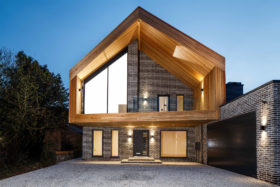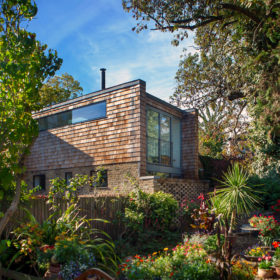
9th & 10th September, Westpoint Arena, Exeter. 100s of suppliers, seminars, expert advice. Explore all the options, all in one place – only at Build It Live.
Book your free tickets now
9th & 10th September, Westpoint Arena, Exeter. 100s of suppliers, seminars, expert advice. Explore all the options, all in one place – only at Build It Live.
Book your free tickets nowA property’s internal doors can fulfil a range of functions. Aside from the obvious privacy benefits, they also have useful soundproofing and insulating qualities, and can make a real aesthetic statement.
“Because of the rise in open-plan living, even really big houses have far fewer internal doors than they used to,” says Elizabeth Assaf, designer at Urban Front.
“Instead, people are opting to make the ones they do have into more of a feature, so they’re often bigger and bolder in colour and have a lot more glazing.”
So what do you need to know to select the right internal doors for your property?
First and foremost, consider how you are going to use the door and the adjoining rooms/circulation areas.
Standard hinged models will usually be suitable, but there are certain scenarios that may benefit from a different arrangement.
For instance, do you have narrow corridors or a small bedroom with an ensuite? Installing a pocket door system that slides into the wall may be the best solution here, as it won’t take up floor space or require any strategic positioning of furniture.
“I think in the past, pocket doors were seen as being a bit tacky,” says Elizabeth, “but there are some really good designs now and you can do so much with them. A lot of people install them in rooms where they want a seamless transition between the wall and the door.
“The flush fitting means you can’t see a frame, so it’s a really great way of concealing an entrance.”
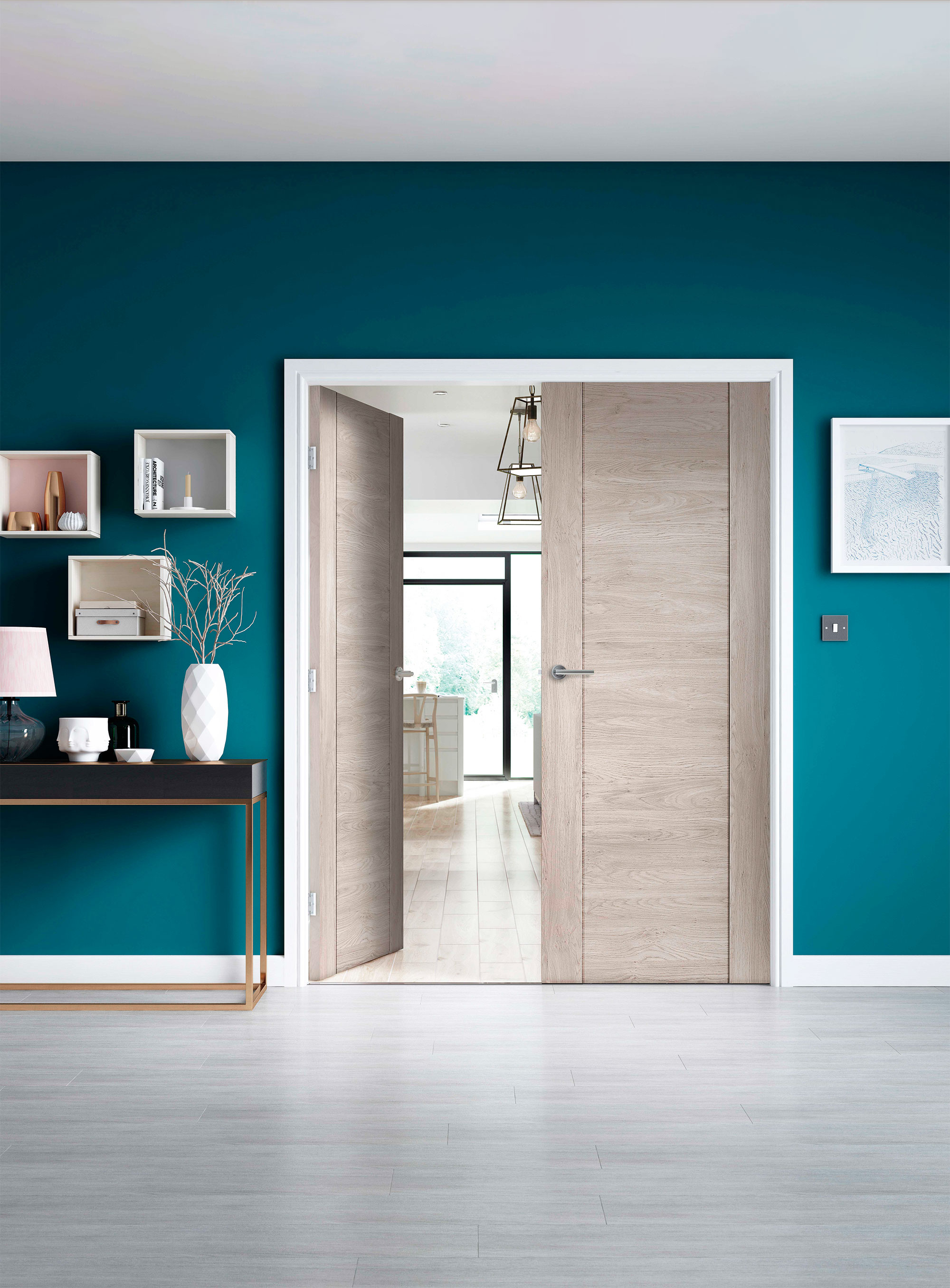
This mushroom grey double doorset by JB Kind has a neutral appeal that will work well in modern interiors thanks to its clean lines and slightly textured finish
Internal bifold or sliding doors are often used to create a feeling of connectedness between two spaces while also allowing you to close areas off to create more privacy – a great option in an open-plan living zone.
“Putting in room dividers gives you more flexibility,” says Matthew Todd, managing director of Todd Doors. “It can also stop the transmission of cooking smells from the kitchen. Most people opt for glazed panels so that when they’re closed, you still retain the flow of light in the house.”
Whether you like high gloss modern finishes or rustic timber textures, your material choice should be largely informed by your home’s overall aesthetic.
A traditional country cottage with exposed beams and a flagstone floor probably won’t suit minimalist glass doors, but would look lovely with the addition of characterful timber options.
Of course, wood is a popular material choice for internal doors and you can find these in styles to suit virtually every scheme.
“For contemporary interiors, many of our clients want the units to disappear into the walls, so they opt for doors with no frame or architrave,” says Elizabeth. “If you’re going more traditional, an oak panel design with ornate handles often works well in these scenarios.”
Glass doors can look stunning, owing to their ability to bring a feeling of light and openness, but this quality also comes with a down side.
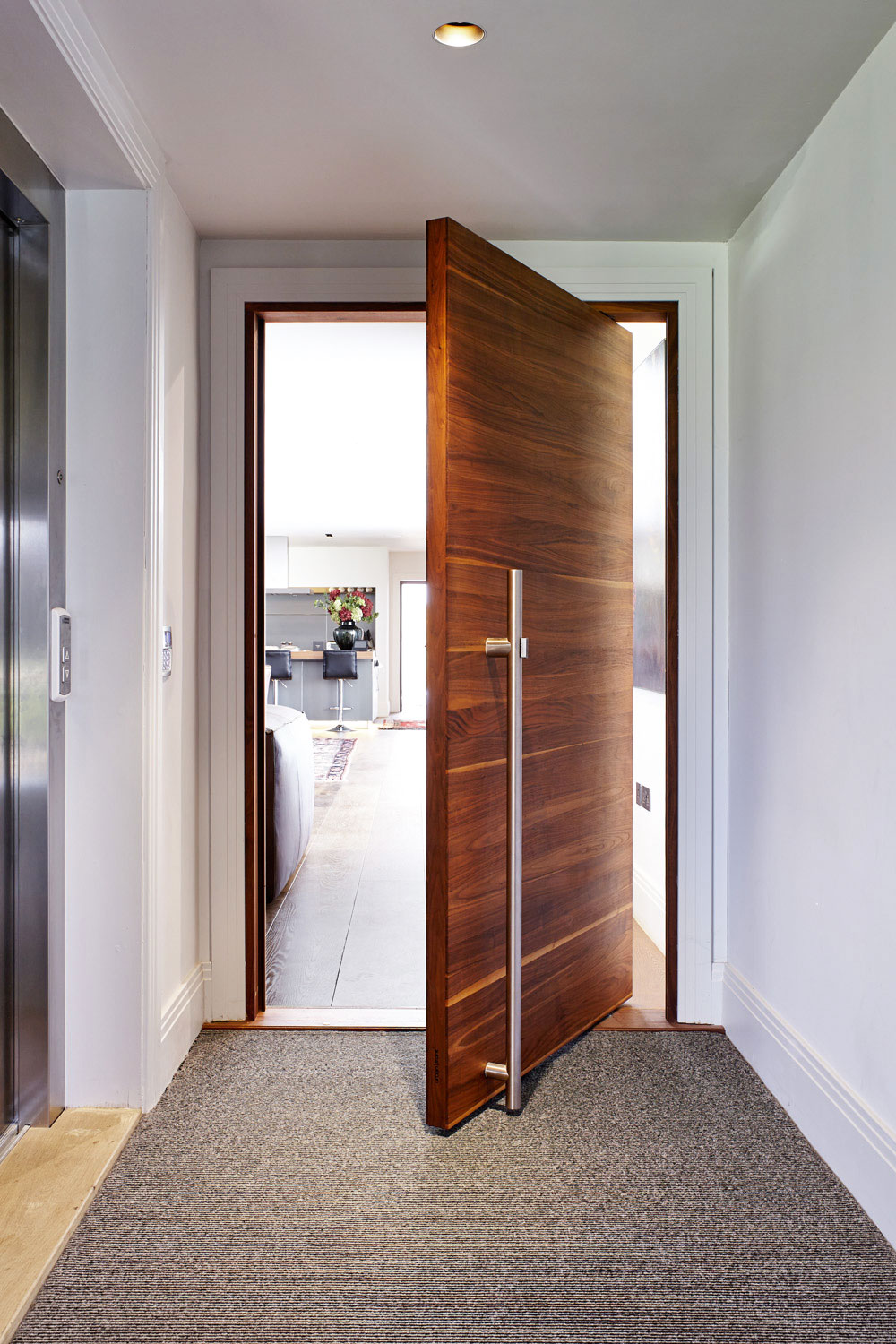
Installing a door set on a pivot rather than a hinge, like this oversized model by Urban Front, can add extra wow factor
“With glazing, you do have to consider whether you can keep the rooms on the other side tidy,” says Matthew. “They’re suddenly visible all the time. You can’t just close the door and lock away the mess!”
Metal interior finishes have also been growing in popularity lately. “Especially in mews houses, a lot of people have copper kitchens, so they want a copper door to match,” says Elizabeth. “Darker options, specialist metals and more outrageous finishes are definitely in vogue right now.”
These do tend to be pricier then wooden models, but there are similar alternatives if you’re on a tight budget.
“We offer a number of timber units that reflect the look of metal with slim rails and glazing bars to replicate the Crittall-style look from the 1920s and 30s,” says Matthew. “These work great in minimalist loft-style apartments.”
As we’ve seen, options such as metal finishes and glazed panels will push up costs, but generally, the price of a door will depend on whether it’s a solid wood, solid core or hollow core construction.
The latter units are typically constructed from a timber frame, with a plywood or hardwood surface, filled with rigid cardboard and covered with veneer.
“You can find fully finished doors for less than £100,” says Matthew. “A lot of people buy the cheapest one they can find, which is often in its bare state, but then you’ve got to factor in the cost of buying the paint and the time it takes to do it yourself, or a decorator’s fee. So even if it’s a little bit more expensive at the point of purchase, a factory pre-finished door is still going to come in cheaper overall.”
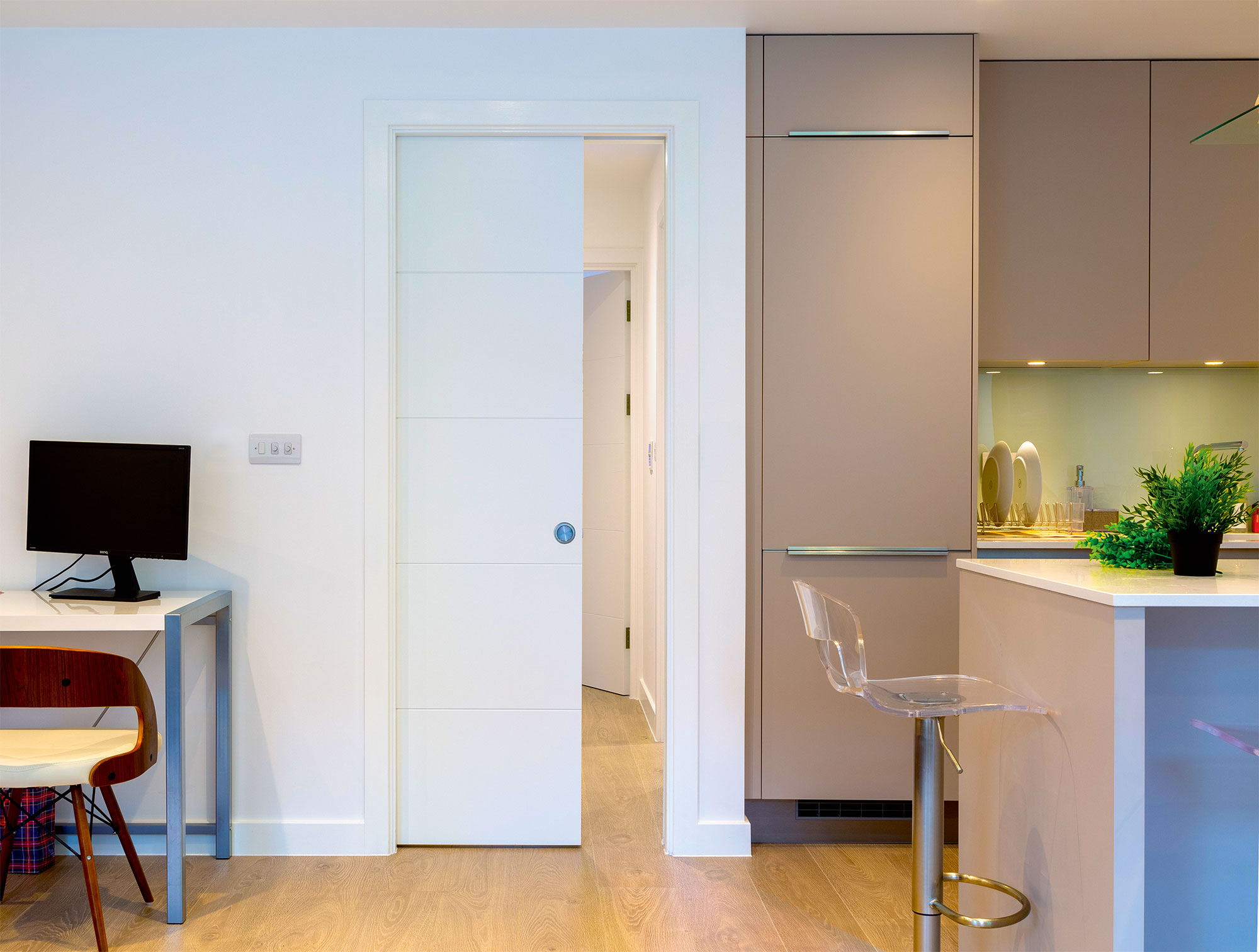
A pocket door system, like this smart white offering from Todd Doors, can work well in areas with limited floor space
Solid core veneered versions made from chipboard or particleboard have midrange price tags and mimic the weightiness of solid wood with its associated benefits.
“For a decent quality internal veneer door set, I would expect to pay around £500,” says Elizabeth, “but for top spec you should increase your budget. Our hardwood doors start from £1,800.”
Your decision will come down to what represents value for money for your budget. Installing high quality fixtures in your home will increase its overall worth.
Solid doors are very sturdy, with a thick, highly insulating construction that can boost comfort levels and stop the travel of unwanted noise. A lot of homeowners elect to install this type downstairs, where it’s noisier and people spend more time, and go for cheaper models upstairs.
All internal doors must meet the UK’s minimum accessibility requirements as outlined by Building Regulations, but aside from that, there’s no specific size they have to be.
A typical door might be 1,981mm (H) x 762mm (W) x 35mm (D), with a width of 838mmor more if wheelchair access is required. When space is limited, smaller doors are usually 686mm wide.
Opting for larger wheelchair accessible entryways means that you will be protected from having to undertake expensive renovation works or having to move in the future, should these become necessary.
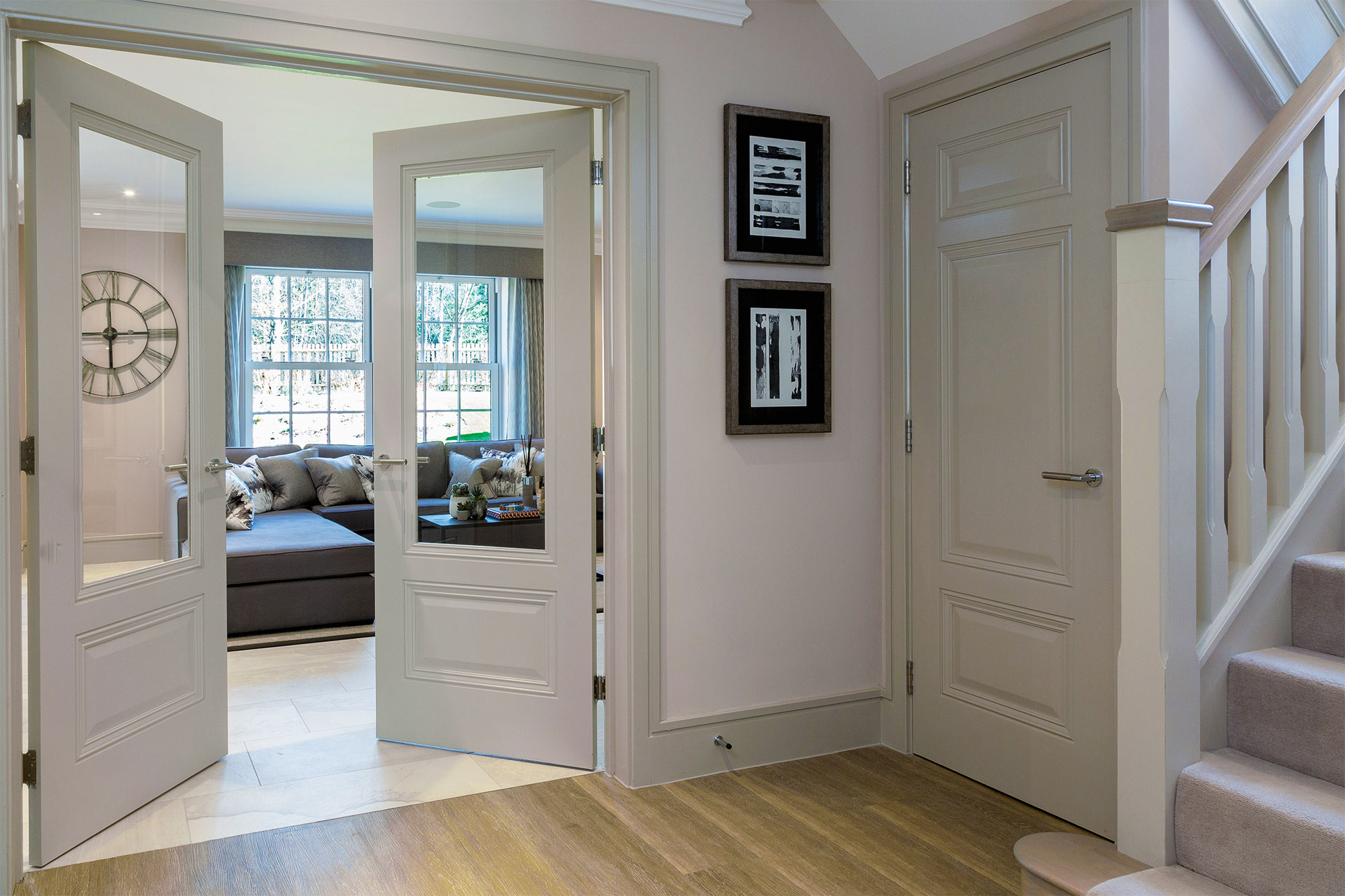
These glazed French doors by Todd Doors allow zones to be closed off while still allowing light to travel throughout the house
For those who want to create some wow factor, going for a very large oversized door might also be worth considering.
While these can work on a regular hinge system, installing a pivot, where the door spins around an offset pin, can also help to bring more flair into a room.
“These designs look fantastic sat within really big spaces where they’re used as a room divider,” says Elizabeth, “but it’s primarily a design choice. Everyone we have spoken to who has wanted one of these installed has been keen on making a real aesthetic statement.”
